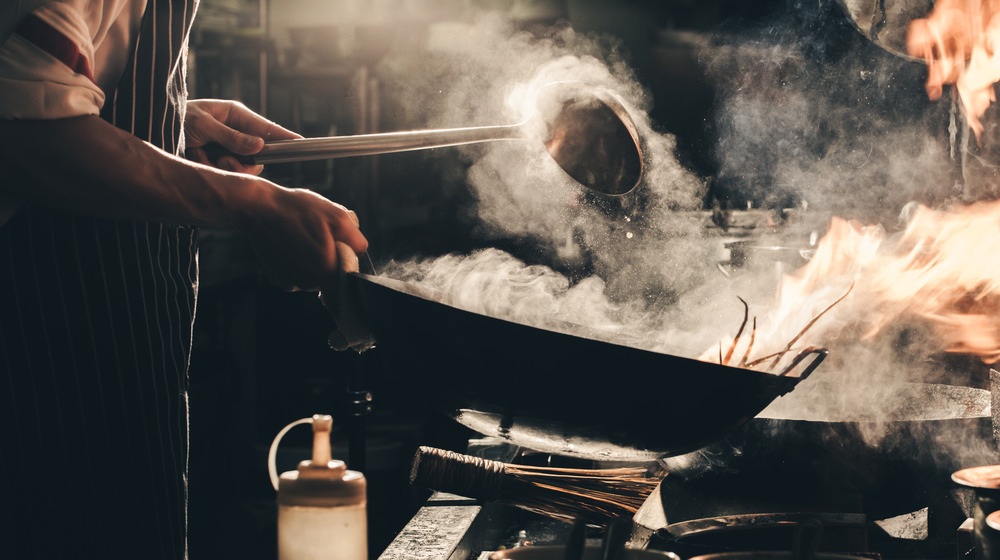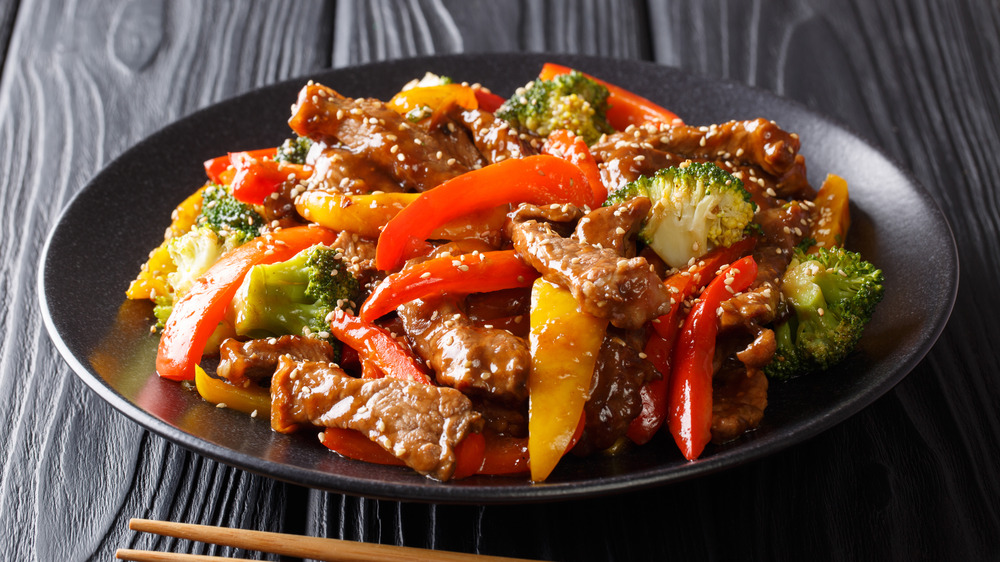What You Should Know About Managing Moisture In Your Wok
The wok is a versatile tool in any kitchen. As Serious Eats reports, it can be used for more than the typical stir-frying, which is what many people associate with the tool. Use the unique pan to deep fry, braise, or even steam your desired ingredients. However, if you're looking to whip up a perfect stir-fry with your wok, and you want that flavorful sear on all your ingredients, there are a few things you need to know about managing moisture in the process.
The most important thing starts with your ingredients, and the condition in which they hit your wok. Heat is a necessary element for getting a beautiful sear on your stir fry ingredients. As author and wok master Grace Young suggested to Epicurious, there's a simple test that can help you know when your wok is ready to use. If you flick a bit of water at a heated wok surface, it should evaporate as soon as it hits the wok — that's how you know it's ready for your tasty veggies and protein.
However, if your ingredients are still damp when you're ready to place them in the wok, it doesn't matter if your wok is the perfect temperature. When you toss in several handfuls of damp bell peppers or onions, for example, the overall temperature of your wok can become lowered. As a result, instead of searing, your ingredients will just steam, which doesn't add the same level of flavor (via Epicurious).
What about the sauce?
If your main concern in the stir-frying process is ensuring your ingredients aren't too damp going into the piping hot pan, you just might be wondering about where sauce comes into the equation. Don't worry, you don't need to give up your favorite saucy addition to stir-fry — you just need to be mindful of when you add it in.
As chef Ken Hom told The Telegraph, you need to start the stir-fry process by cooking any proteins you're incorporating in your dish. When they're prepared to your liking, take a moment to drain any liquid that could have gathered during the process. This increased liquid in the cooking process is particularly common when using fatty meats since, unlike water, fat doesn't evaporate when you're cooking (via Amazing Ribs).
Then, cook your properly dried vegetables. Only then, once everything has already been seared to perfection, do you add your sauce for the final burst of flavor (via The Telegraph). Your choice of sauce can be whatever you want, although Bon Appétit explains that a delicious stir-fry sauce should include elements of sweet, salty, acidic, and umami.

